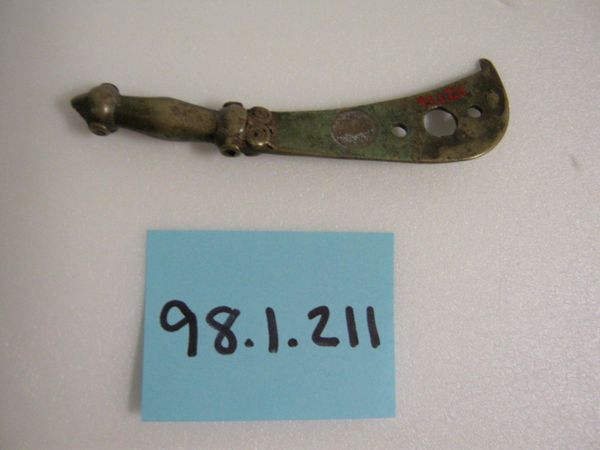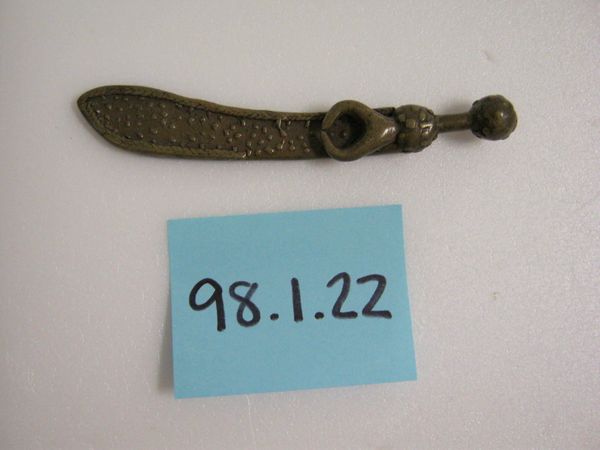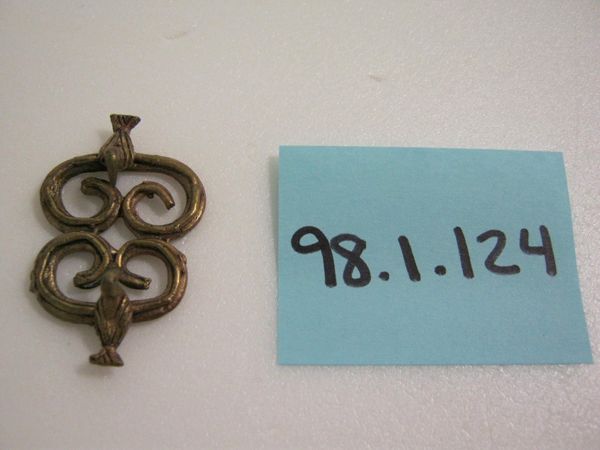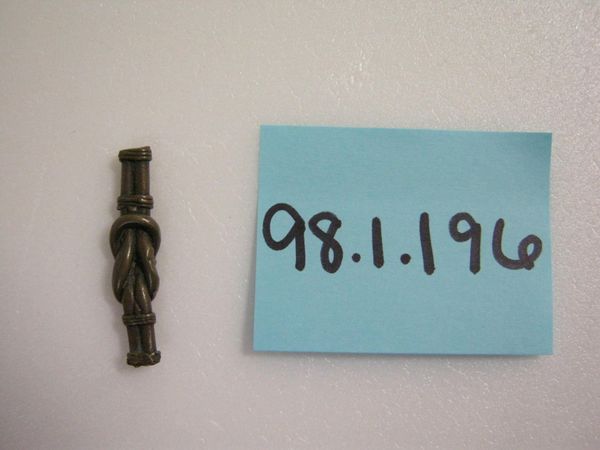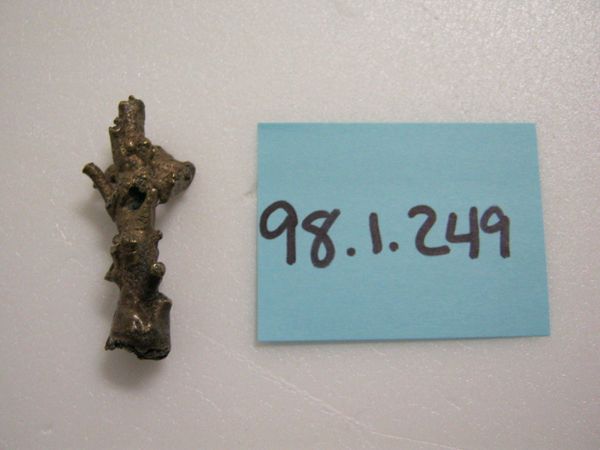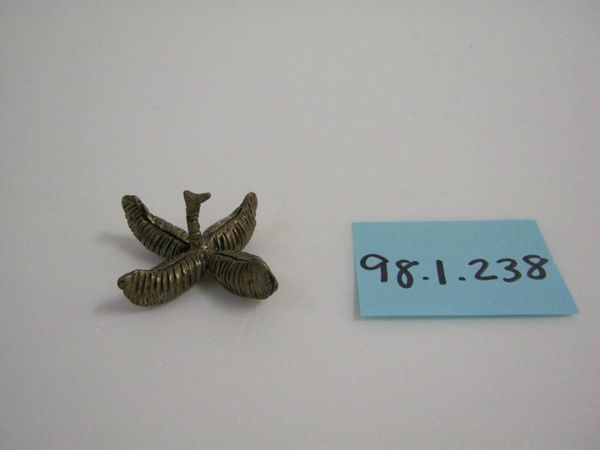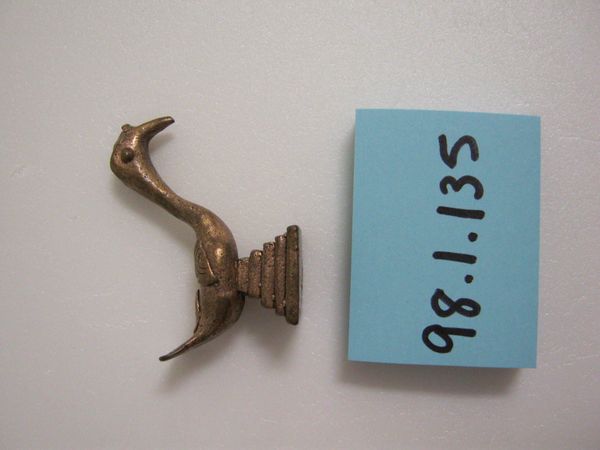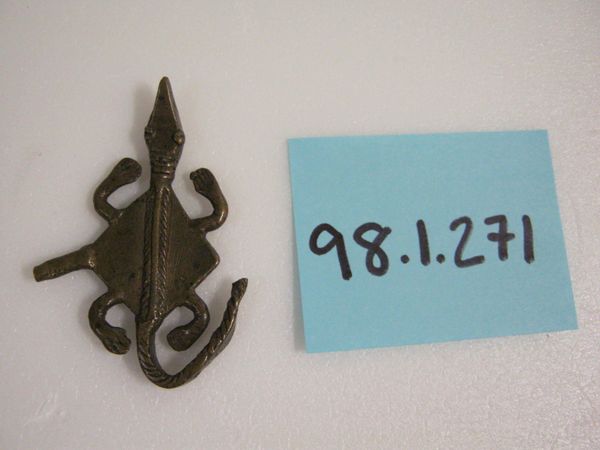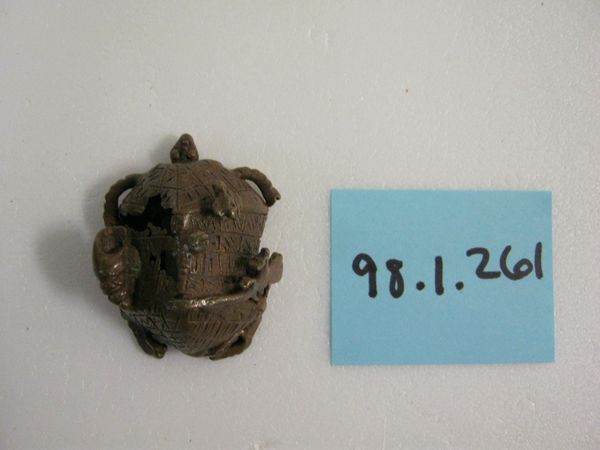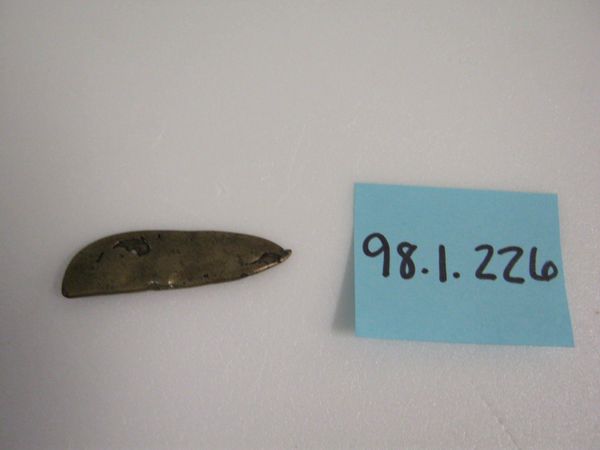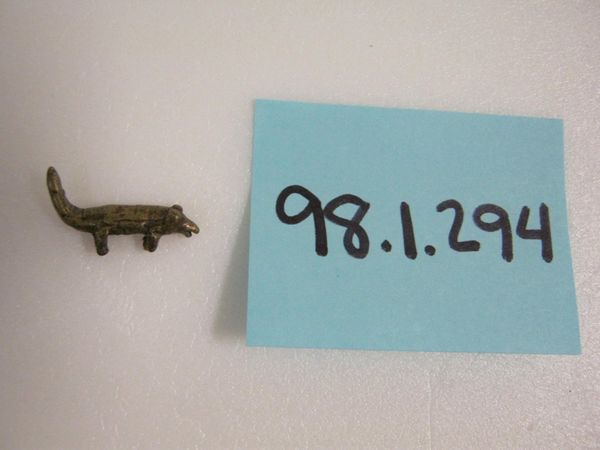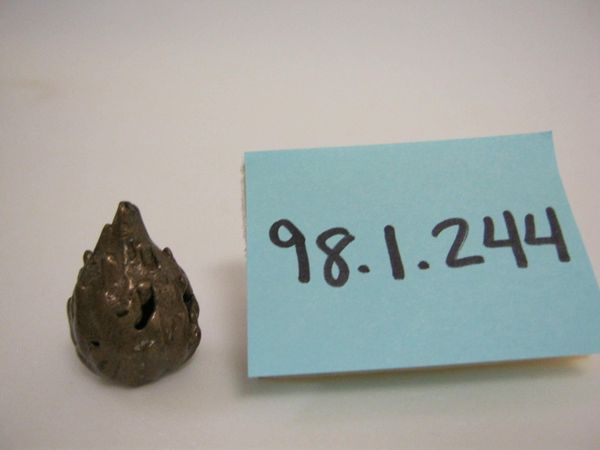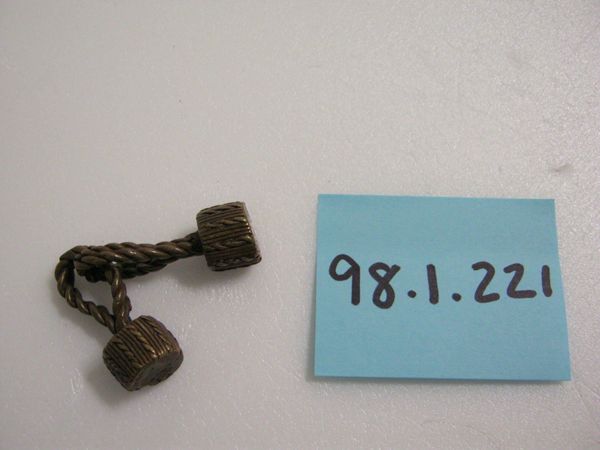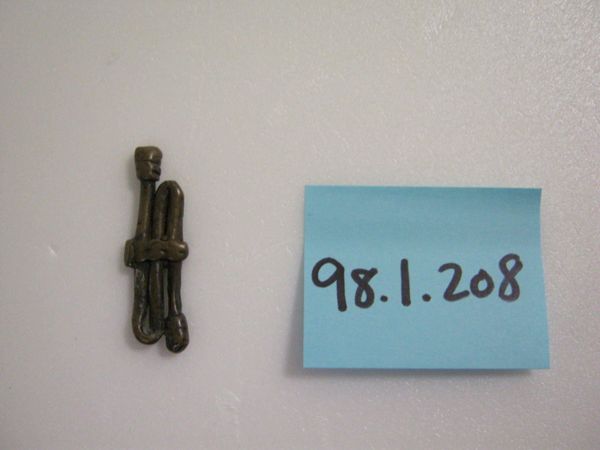![Goldweight [Dagger] by Akan](/_next/image?url=https%3A%2F%2Fd2w8kbdekdi1gv.cloudfront.net%2FeyJidWNrZXQiOiAiYXJ0ZXJhLWltYWdlcy1idWNrZXQiLCAia2V5IjogImFydHdvcmtzLzJmNjRkOGMwLWJiYWItNGIwZi05ZjVlLTI4NDY3YTFmNWFiMC8yZjY0ZDhjMC1iYmFiLTRiMGYtOWY1ZS0yODQ2N2ExZjVhYjBfZnVsbC5qcGciLCAiZWRpdHMiOiB7InJlc2l6ZSI6IHsid2lkdGgiOiAxOTIwLCAiaGVpZ2h0IjogMTkyMCwgImZpdCI6ICJpbnNpZGUifX19&w=3840&q=75)
brass
brass
form
Dimensions: 1/4 x 13/16 x 2 5/8 in. (0.64 x 2.06 x 6.67 cm)
Copyright: Public Domain
Curator: Before us is a 19th- or 20th-century Akan goldweight in the shape of a dagger, currently held at the Minneapolis Institute of Art. It is crafted from brass. Editor: Immediately, I am struck by the contrast. A weighty object taking the form of a blade. A symbol of aggression rendered inert, domesticated by its function. The workmanship is beautiful. Curator: Indeed. These goldweights were not merely utilitarian; they were integral to the Asante economic and social structure. The form, as we see with this dagger, communicates status and cultural values. Brass itself, in the Asante context, possesses symbolic importance. It suggested wealth derived through trade and control of resources. Editor: It also represents a unique synthesis. A marriage of function and representation. Looking closely at the surface, the level of detail suggests an artisan who considered this an artistic production, as much as practical. The textured handle contrasts with the smooth planes of the blade, which then intersect at an ornate knuckle guard. It's far too intricate to be merely functional, isn't it? Curator: Precisely. Each element serves a dual purpose: fulfilling the requirements of a measurement device while simultaneously broadcasting a narrative, and in this case, communicating the power associated with weaponry. We can assume that its original owner wanted to send the right signals, as gold transactions occurred often in public spaces. Editor: And to the semiotician in me, that ornate hilt and well-formed blade speaks to concepts of protection, authority, defense, and even violence—concepts easily translated to transactions. Curator: A rich tapestry of signifiers packed into a relatively small object! Consider that for those who might not have been literate in Western terms, images, objects, and material communicated quite effectively about economics, society, and status. Editor: This object's design reveals the values of a culture through its choices of what to make heavy, or precious. The blade could’ve taken any form, but to put one's wealth down on the likeness of a dagger, implies that its design had specific ideological implications for that owner. Curator: It reveals, in essence, that visual vocabulary served as another form of transaction. A way to broadcast identity as confidently as settling a debt. Editor: I’m captivated by the precision and intention behind what seems like an ordinary tool at first glance. Curator: And, perhaps we understand, too, a bit more about the aesthetic values of an unfamiliar history.
Comments
No comments
Be the first to comment and join the conversation on the ultimate creative platform.
